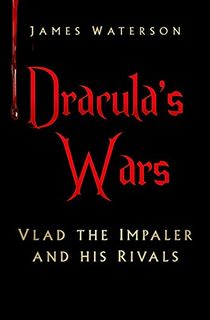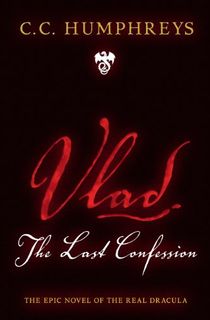For centuries, just the mention of his name has curdled as much blood as he may have spilled in his own short but ruthless lifetime. He had three names, each one representing a different side of the man and the legend. As a politician, and a prince of the region of Wallachia, he was Vlad III. As the offspring of Vlad Dracul, which translates into “Vlad the Dragon” in medieval Romanian, he was Vlad Dracula, “the son of the dragon.” As the irredeemable monster who inspired literature with his gruesome deeds, he was, and still is, known as Vlad the Impaler.
Enemies feared him, and not for his battle prowess alone. Vlad the Impaler earned his nickname through the hideous practice of impaling enemies of war on stakes and leaving their penetrated corpses out in open fields to rot, in order to intimidate any other opponents who may seek to rise up against him. This nightmarish cruelty, and this unquenchable thirst for human blood, went on to inspire great art in the late 19th century when Irish writer Bram Stroker borrowed Vlad’s name and worst characteristics for his title character.
Dracula, published in 1897, was a game changer in the world of horror fiction. Stroker’s stand-in for Vlad was not only a soul-possessing and blood-sucking vampire, but a powerful manipulator of events as well, rendering the mortal characters helpless, as Vlad’s own victims had been. Both Vlad and Dracula were both truly the scariest being of each of their respective epochs.
Stroker’s work has succeeded in entreating the world to remember Vlad Dracula’s name and keep him a relevant and keenly researched historical figure. Here are five especially accomplished works, all of them contemporary and long past Stroker’s era, about Vlad the Impaler that come highly recommended. Their morbid content just might puncture your psyche like the sharp end of a stake. They make for perfect reading this Halloween season.

Dracula: Essays of the Life and Times of Vlad the Impaler
Vlad is so fascinating a subject that hordes of scholars have dedicated portions of their lives to studying him and the horrors that he experienced and enacted. In this profound collection of nonfiction essays—that explore everything from the cursed life he led to the fictional tales he inspired—an impressive collection of literary luminaries band together for one purpose: to raise up (not take down) the real Dracula.
The authors, who hail from America, Britain, and Romania, include Constantin C. Giurescu, Veniamin Ciobanu, Matei Cazacu, Kurt W, Treptow, Radu R. Florescu, Raymond T. McNally, and others. This is an excellent choice if you’re looking for multiple perspectives, rather than just one single point of view, on the topics of medieval Romanian politics and vampirism.

Romanian History: A Captivating Guide to the History of Romania and Vlad the Impaler
Captivating History brought out something that really lives up to its name. Romanian History documents much more than the life of the warrior prince who was the basis for Dracula. It tells the story of everything that came before “Dracula,” and the circumstances that allowed such a man to come into power without being elected.
The book is divided into two sections. Firstly, there is “History of Romania,” which includes extensive information about Vlad’s royal family and significant events in Romania’s military history such as the Roman-Dacian War. Who were the people of medieval Romania, what did they have to be proud of, and what did they have to fear? The second half of the book, “Vlad the Impaler,” covers Vlad himself and how he became the most discussed figure of the powerful territory he inherited.

Prince Dracula
The real Vlad the Impaler was an undisputed master of warfare, physical and psychological torture, and the kind of unbridled cruelty that inspires legends. Authors Gavin Baddeley and Paul Woods tag-team to ask and answer some vital questions. Could Vlad be considered a hero in his own country, while a monster outside of his own realm? Was he a true defender of the Christian faith against the Ottoman Turks or did he just use war as an excuse to unleash his evil on any available victim? Were does Vlad stand as a shadow-darkened politician in modern times?
Prince Dracula: The Bloody Legacy of Vlad the Impaler is as much a character study as it is a biography. This book is recommended for any casual or academic researchers who want to see Vlad the Impaler’s war tactics regarded closely from an analytical perspective.

Dracula's Wars: Vlad The Impaler and His Rivals
Author James Waterson’s biography works hard to dispel the myth that Vlad, like his fictionalized Dracula counterpart, was a pampered aristocrat who always had the upper hand over his enemies. Far from it. In real life, Vlad was a prisoner of war, a leader of armies, a seasoned soldier, and miles away from immortal and invincible. He inherited many enemies just by being the heir of a military family, and he collected as many new enemies as he collected bodies on the battlefield. This is a recommended book for anyone interested in where Vlad stood in the face of international politics and where he either fell or pushed back.
Historical Fiction

Vlad: The Last Confession
In C.C. Humphreys’ novel, Vlad is separated from his long-standing vampire myth and fleshed out as a man molded into something inhumane by the unspeakable (and yet still spoken) trauma of his early years. Three individuals to whom Vlad was close step forward to relay his story to those trying to piece together the pieces of the puzzle that made up the life of this notorious degenerate following his death. They are Ion, who was Vlad’s closest friend and conspirator, his mistress and great love Ilona, and the priest Vasilie, who in the confidence of the confessional heard Vlad’s frightful testimony with his own ears. The three of them each have a story to tell, and a version of Vlad that only they themselves knew best.




